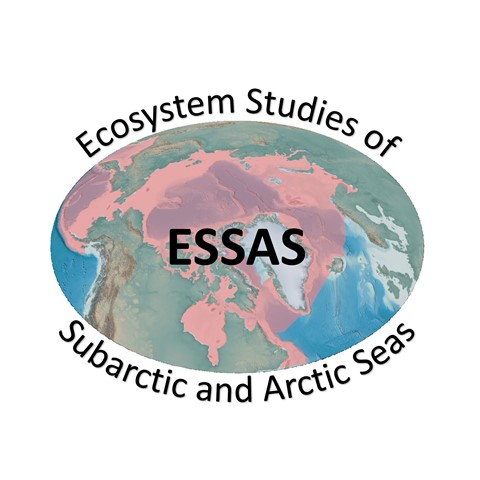On these ESSAS Publications and Reports pages the following can be accessed and downloaded:
An ESSAS publication is one that has ― in the title, acknowledgements, or actual text ― explicit reference to ESSAS or its affiliated programs. Or, is a publication based on work funded by National, Multi-national, or Regional ESSAS-affiliated programs. Articles can be published in peer-reviewed journals, an ESSAS volume, as part of an ESSAS Working Group initiated study, ESSAS-affiliated projects, and/or has acknowledged ESSAS in the paper.
The Deep-Sea Research II volume is an important product of the GLOBEC-ESSAS Symposium on "Effects of climate variability on sub-arctic marine ecosystems" held in Victoria, BC, Canada 16-20 May 2005. It consists of regional reviews of four of the six sub-Arctic regions addressed in the symposium, and seven disciplinary papers focused on physical and chemical aspects, eight papers on phytoplankton and zooplankton, 11 on higher trophic levels, including benthos, fish, seabirds, and marine mammals, and two on the human dimension of climate impacts on marine ecosystems. In the regional reviews, we sought papers that would update the regional overviews published in the Addendum to the ESSAS Science Plan (Hunt and Drinkwater, 2005).
Papers contained in the Progress in Oceanography special issue result from the 2007 ICES Annual Science Conference theme session on “Comparative Marine Ecosystem Structure and Function: Descriptors and Characteristics” held in Helsinki, Finland. The session was co-sponsored by the GLOBEC Ecosystem Studies of the Subarctic Seas (ESSAS) program and the North Pacific Marine Science Organization (PICES.)
This page contains reports of ESSAS Annual Science Meetings and annual meetings of the ESSAS Scientific Steering Committee.
The ESSAS Science Plan presents results of the Planning Workshop held May 26-28 May, 2003 at the Institute of Marine Research in Bergen, Norway. It addresses major areas of ESSAS research inquiry:
1. What are the external forcing functions that link global and regional climate processes to the
physical oceanography of the Sub-Arctic Seas?
2. How does variability in the physical aspects of these marine systems affect ecosystem processes
and structure?
3. How can we integrate across spatial and temporal scales to predict how changes in climate may
affect the productivity and sustainability of the marine ecosystems of the Sub-Arctic Seas?
The Appendix to the ESSAS Science Plan presents ”Background on the Climatology, Physical Oceanography, and Ecosystems of the Sub-Arctic”
This page contains reports of ongoing ESSAS activities published in science newsletters.











